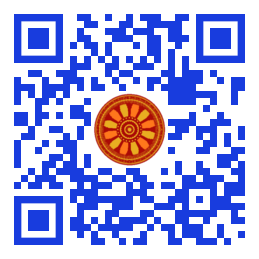
:: International Transaction Journal of Engineering, Management, & Applied Sciences & Technologies
http://TuEngr.com

ISSN 2228-9860
eISSN 1906-9642
CODEN: ITJEA8
FEATURE PEER-REVIEWED ARTICLE
Vol.13(5)(2022) |
Large-Scale Laboratory Modeling of the Performance of the Stone Column Group in Improving the Behavior of Sandy Soils
 Reza Naderi (Faculty of Civil & Architectural Engineering, Shahrood University of Technology, Shahrood, IRAN).
Reza Naderi (Faculty of Civil & Architectural Engineering, Shahrood University of Technology, Shahrood, IRAN).
Ali Yousefi Samangani (Civil-Geotechnics Group, Shahrud Industrial University, IRAN).
Disciplinary: Civil Engineering (Geotechnical Engineering).
doi: 10.14456/ITJEMAST.2022.103
Keywords: Stone column group; Sandy soil; Load-carrying capacity; Soil load settlement behavior; Geometric arrangement; Single stone column.
AbstractOne of the efficient methods to improve soil behavior is the use of stone columns. Due to the high volume of studies on the performance of single Stone columns, in this study, we will seek to investigate the performance of group Stone columns in improving the behavior of sandy soils. Sandy soils, especially in coastal areas, due to the lean mechanical properties of the soil, have always been considered an unsuitable soil sample in the design and the need for improvement in this type of soil is urgently needed. Therefore, in this article, by using stone columns as a group, we will seek to improve the behavior of sandy soil. How to arrange the stone columns (square, triangular arrangement) and the diameter of the stone columns (60, 80 and 120 mm) are the main variables in this article. In all models, the length-to-diameter ratio is considered equal to 5. The load-carrying capacity and soil settlement have been investigated for different modes of stone column arrangement in the laboratory environment as superimposed load. The results obtained from the article show that the arrangement of the stone column in a triangular and square shape can increase the soil load carrying capacity by 31.8 and 37.5%, respectively. This incremental trend is more noticeable in the square arrangement. Also, based on other results of this article, it was observed that by increasing the diameter column parameter and increasing the diameter equivalent of the stone column group, we will see an improvement in the performance of the stone column group in increasing the sandy soil load-carrying capacity.Paper ID: 13A5S
Cite this article:
Naderi, R., Samangani, A.Y. (2022). Large-Scale Laboratory Modeling of the Performance of the Stone Column Group in Improving the Behavior of Sandy Soils. International Transaction Journal of Engineering, Management, & Applied Sciences & Technologies, 13(5), 13A5S, 1-13. http://TUENGR.COM/V13/13A5S.pdf DOI: 10.14456/ITJEMAST.2022.103
References
- Pulko, B. and Majes, B. (2006). Analytical method for the analysis of stone-columns according to the Rowe Dilatancy theory. Acta Geotechnica Slovenica, 3(1), 37-45.
- Krishna, M. and Madhav, M.R. (2009). Engineering of ground for liquefaction mitigation using granular columnar inclusions: recent developments. American Journal of Engineering and Applied Sciences, 2(3), 526-536.
- Ambily, A. P. and Gandhi. S. R. (2007). Behavior of Stone Columns Based on Experimental and FEM Analysis, Geotechnical and Geoenvironmental Engineering, 133.
- Hu, W.. (1995). Physical Modeling of Group Behavior of Stone Column Foundations. Ph.D. dissertation, Univ. of Glasgow, U.K.
- Bae, W., Bang, W. and Byung, C.. (2002). Behavior of Foundation System Improved with Stone Columns. Proc. 12th Int. Offshore and Polar Engineering Conf., Int. Society of Offshore and Polar Engineers, Cupertino, CA.
- Andreou, P. and Papadopoulos, V. (2006). Modelling Stone Columns in Soft Clay, Proc. 6th European Conf. on Numerical Methods in Geotechnical Engineering, Graz, 777-780.
- Castro J. (2014) Numerical modelling of stone columns beneath a rigid footing, Computers and Geotechnics, , 60, 77-87.
- Ghalam, M., et al. (2020). Numerical study of the effect of stone columns. Journal of Civil & Environmental Engineering, 49(2).
- Azizi, M.H. and, Massoud, N. (2017). Laboratory study of the effect of adhesion on the stability of earthen slopes reinforced with stone columns. Journal of Modares Civil Engineering, 17(1).
- Lajevardi, S.H., Enami, Shamsi, S.H.R., Hamidi, M. (2019). Experimental study of single and groups of stone columns encased by geotextile, Amirkabir J. Civil Eng, 50(6).
- Dinarvand, Reza and Ardakani, Alireza. (2019).Behavior of geosynthetically enclosed grain columns in sandy loam soil under direct shear testing. Journal of Civil Engineering Amirkabir, 50(5).
Other issues:
Vol.13(4)(2022)
Vol.13(3)(2022)
Vol.13(2)(2022)
Archives
Call-for-Papers
Call-for-Scientific PapersCall-for-Research Papers: ITJEMAST invites you to submit high quality papers for full peer-review and possible publication in areas pertaining engineering, science, management and technology, especially interdisciplinary/cross-disciplinary/multidisciplinary subjects.
To publish your work in the next available issue, your manuscripts together with copyright transfer document signed by all authors can be submitted via email to Editor @ TuEngr.com (please see all detail from Instructions for Authors)
Publication and peer-reviewed process:
After the peer-review process, articles will be on-line published in the available next issue. However, the International Transaction Journal of Engineering, Management, & Applied Sciences & Technologies cannot guarantee the exact publication time as the process may take longer time, subject to peer-review approval and adjustment of the submitted articles.